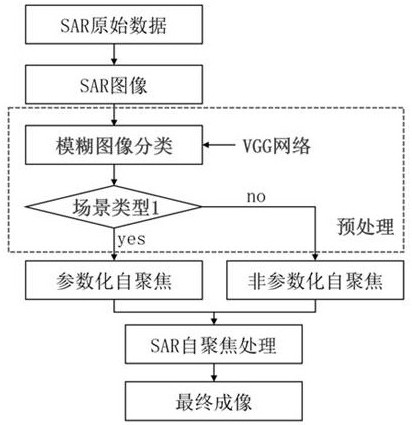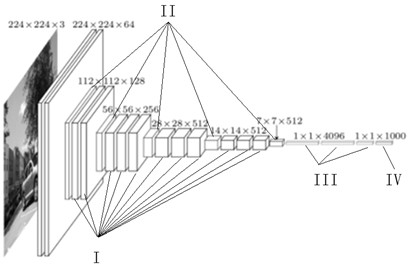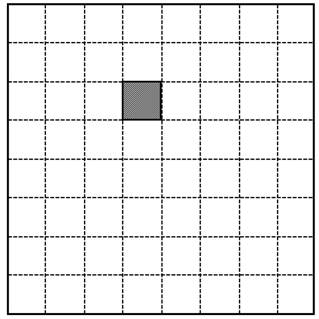A sar self-focusing method based on image classification
A self-focusing and image technology, which is applied in the direction of radio wave reflection/re-radiation, instruments, measuring devices, etc., can solve the problems of low efficiency of parametric methods, lack of judgment standards, fuzzy empirical judgment, etc., to improve program versatility and Applicability, guiding and reference significance, and the effect of improving versatility
- Summary
- Abstract
- Description
- Claims
- Application Information
AI Technical Summary
Problems solved by technology
Method used
Image
Examples
Embodiment Construction
[0038] The present invention will be further described in detail below in conjunction with the accompanying drawings and specific embodiments.
[0039] Such as figure 1 Shown, the SAR self-focusing method based on image classification of the present invention, its steps are:
[0040] Step S1: Acquiring a coarse-focused image or a defocused image;
[0041] For airborne SAR data, due to the existence of motion errors, it is actually impossible or difficult to obtain two-dimensional well-focused pictures, and the images acquired at this time are called coarse-focus or defocused images;
[0042] Step S2: performing the first classification using the VGG network for the coarse-focused image or the defocused image;
[0043] Step S3: judging the classification results after VGG classification and performing a second classification;
[0044]Step S4: use the self-focusing method to process the image, and finally obtain a well-focused SAR image. In a specific application example, ac...
PUM
 Login to View More
Login to View More Abstract
Description
Claims
Application Information
 Login to View More
Login to View More - R&D
- Intellectual Property
- Life Sciences
- Materials
- Tech Scout
- Unparalleled Data Quality
- Higher Quality Content
- 60% Fewer Hallucinations
Browse by: Latest US Patents, China's latest patents, Technical Efficacy Thesaurus, Application Domain, Technology Topic, Popular Technical Reports.
© 2025 PatSnap. All rights reserved.Legal|Privacy policy|Modern Slavery Act Transparency Statement|Sitemap|About US| Contact US: help@patsnap.com



